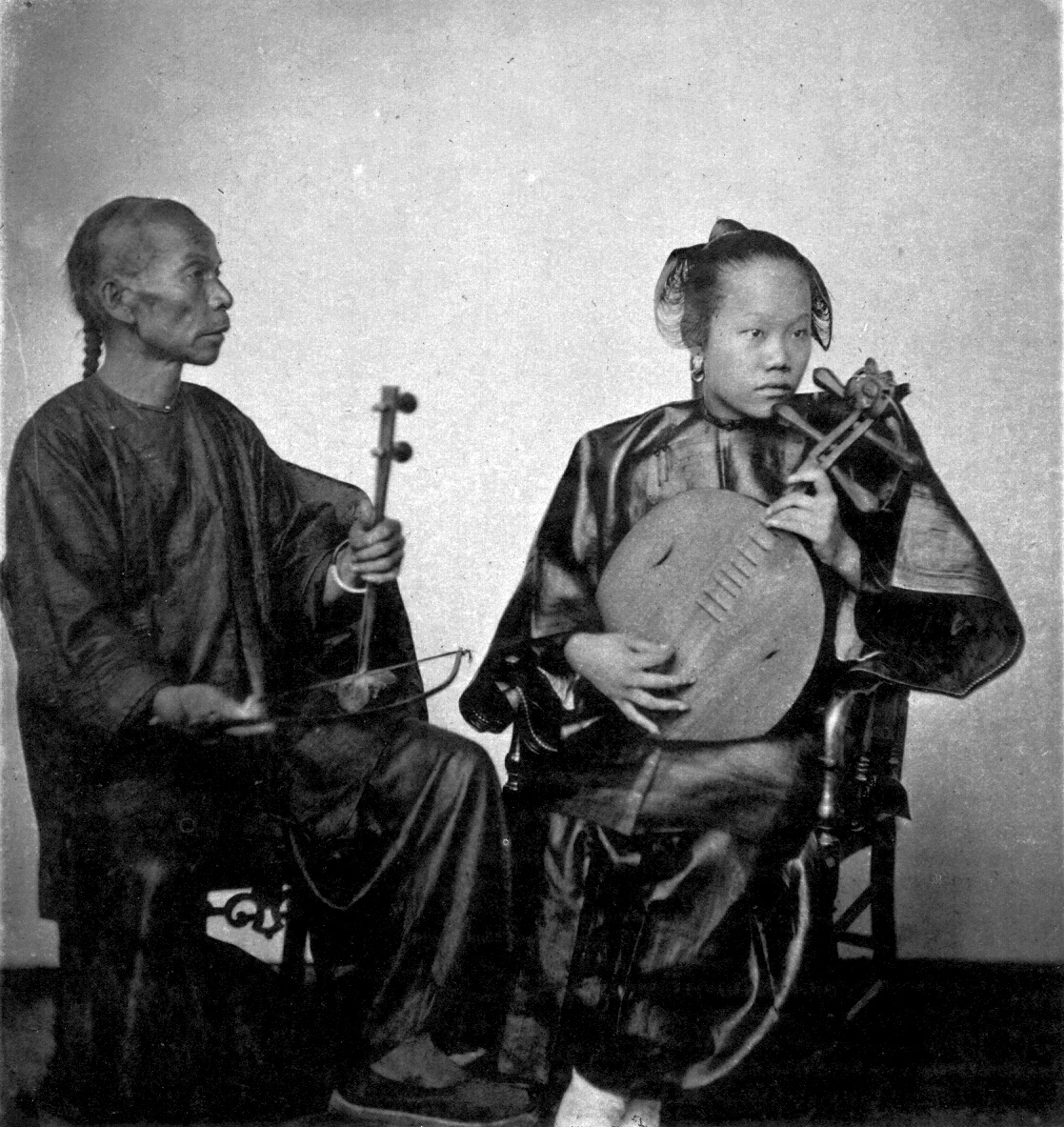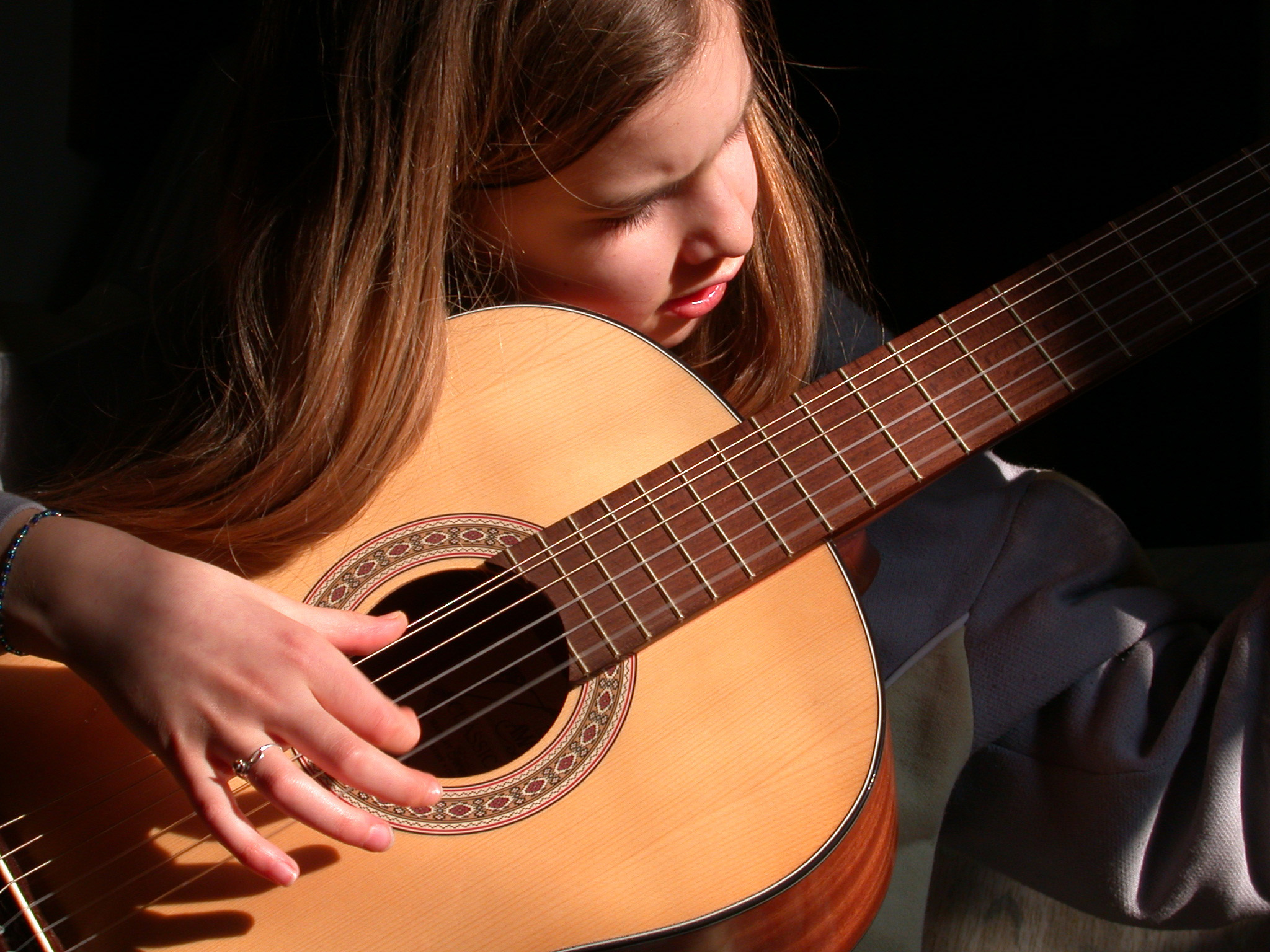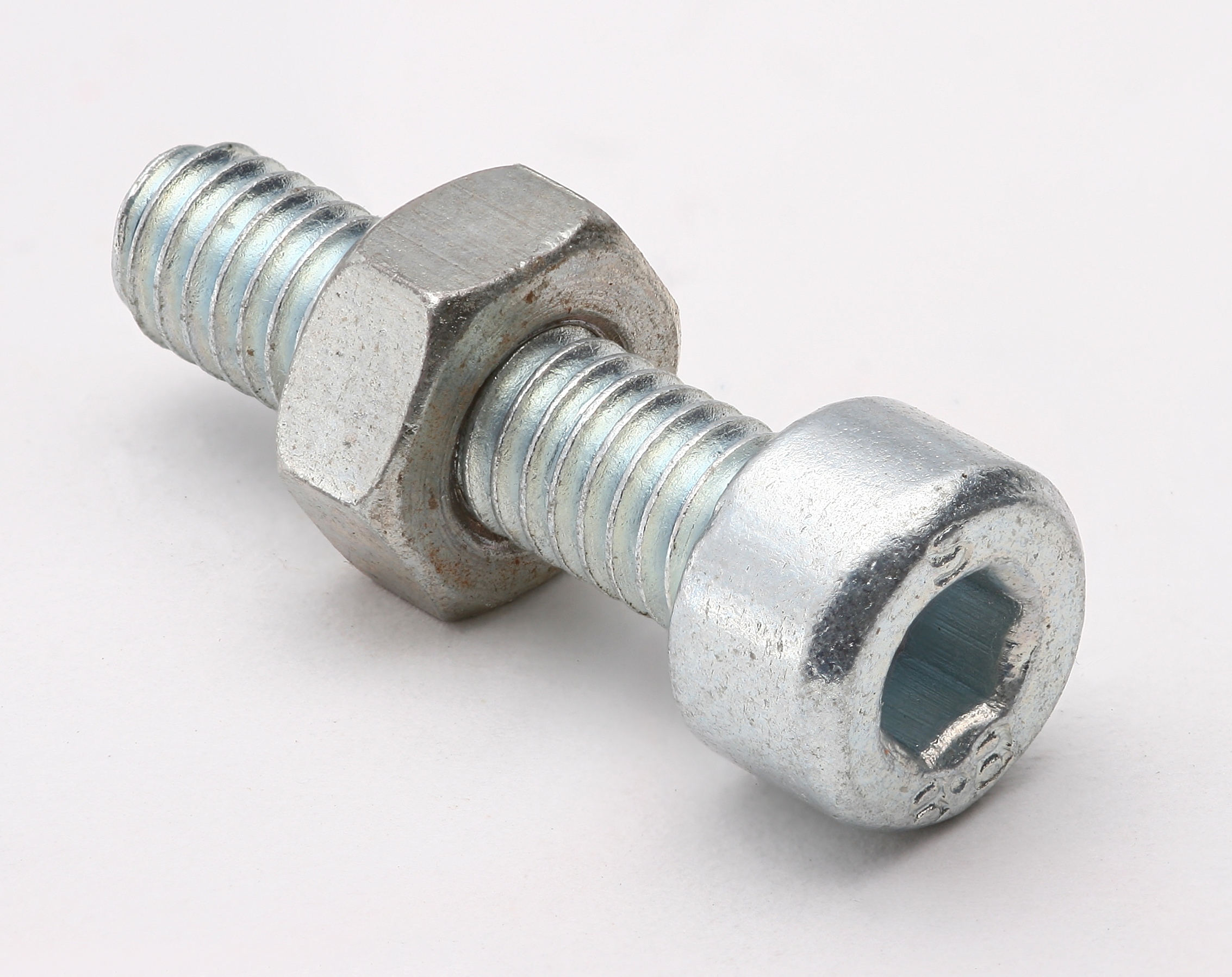|
Zhongruan
The ''zhongruan'' (), is a Chinese plucked string instrument. The ''zhongruan'' has a straight neck with 24 frets on the fingerboard and 4 strings. It is usually played with a plectrum (guitar pick). It can also be played with fingers (index finger and thumb with acrylic nails), which is similar to the way of playing the '' pipa'' (琵琶). The ''zhongruan'' is a tenor-ranged instrument in the family of ''ruan'' (阮). In ancient China, the ''ruan'' was called ''Qin pipa'' (Qin ynastypipa, 秦琵琶) or ''Ruan xian'' (阮咸). Now the ''ruan'' has expanded to different sizes and the ''zhongruan'' is the "medium" one. Use The default tuning of ''zhongruan'' is It can also be tuned as or or other variants, according to requirements in music scores. Since the ''zhongruan'' has a rounded, calm and rich tone, it is usually played as a lead instrument in small ensembles and used to accompany other instruments in Chinese orchestra. It can also be played solo. Construction A g ... [...More Info...] [...Related Items...] OR: [Wikipedia] [Google] [Baidu] |
Ruan (instrument)
The ''ruan'' () is a traditional Chinese plucked string instrument. It is a lute with a fretted neck, a circular body, and four strings. Its four strings were formerly made of silk but since the 20th century they have been made of steel (flatwound for the lower strings). The modern ''ruan'' has 24 frets with 12 semitones on each string, which has greatly expanded its range from a previous 13 frets. The frets are commonly made of ivory or in recent times of metal mounted on wood. The metal frets produce a brighter tone as compared to the ivory frets. It is sometimes called ''ruanqin'', particularly in Taiwan. Sizes The ruan comes in a family of five sizes: *soprano: ''gaoyinruan'' (高音阮, lit. "high pitched ''ruan''"; tuning: G3-D4-G4-D5) *alto: ''xiaoruan'' (小阮, lit. "small ''ruan''"; tuning: D3-A3-D4-A4) *tenor: ''zhongruan'' (中阮, lit. "medium ''ruan''"; tuning: G2-D3-G3-D4) * bass: ''daruan'' (大阮, lit. "large ''ruan''"; tuning: D2-A2-D3-A3) * contrabass: ' ... [...More Info...] [...Related Items...] OR: [Wikipedia] [Google] [Baidu] |
Chinese Orchestra
The term Chinese orchestra is most commonly used to refer to the modern Chinese orchestra that is found in China and various overseas Chinese communities. This modern Chinese orchestra first developed out of Jiangnan sizhu ensemble in the 1920s into a form that is based on the structure and principles of a Western symphony orchestra but using Chinese instruments. The orchestra is divided into four sections – wind, plucked strings, bow strings, and percussion, and usually performs modernized traditional music called ''guoyue''. The orchestra may be referred to as ''Minzu Yuetuan'' () or ''Minyuetuan'' () in mainland China, ''Chung Ngok Tuen'' () in Hong Kong, ''Huayuetuan'' () in Southeast Asia, or ''Guoyuetuan'' () in Taiwan, all meaning Chinese orchestra. The term modern Chinese orchestra is sometimes used to distinguish the current form from ancient Chinese orchestras that existed since the Shang dynasty and was used in royal courts and later during Confucian ceremonies. Anc ... [...More Info...] [...Related Items...] OR: [Wikipedia] [Google] [Baidu] |
Pipa
The pipa, pípá, or p'i-p'a () is a traditional Chinese musical instrument, belonging to the plucked category of instruments. Sometimes called the "Chinese lute", the instrument has a pear-shaped wooden body with a varying number of frets ranging from 12 to 31. Another Chinese four-string plucked lute is the liuqin, which looks like a smaller version of the pipa. The pear-shaped instrument may have existed in China as early as the Han dynasty, and although historically the term ''pipa'' was once used to refer to a variety of plucked chordophones, its usage since the Song dynasty refers exclusively to the pear-shaped instrument. The pipa is one of the most popular Chinese instruments and has been played for almost two thousand years in China. Several related instruments are derived from the pipa, including the Japanese biwa and Korean bipa in East Asia, and the Vietnamese đàn tỳ bà in Southeast Asia. The Korean instrument is the only one of the three that is no longer wide ... [...More Info...] [...Related Items...] OR: [Wikipedia] [Google] [Baidu] |
Pipa
The pipa, pípá, or p'i-p'a () is a traditional Chinese musical instrument, belonging to the plucked category of instruments. Sometimes called the "Chinese lute", the instrument has a pear-shaped wooden body with a varying number of frets ranging from 12 to 31. Another Chinese four-string plucked lute is the liuqin, which looks like a smaller version of the pipa. The pear-shaped instrument may have existed in China as early as the Han dynasty, and although historically the term ''pipa'' was once used to refer to a variety of plucked chordophones, its usage since the Song dynasty refers exclusively to the pear-shaped instrument. The pipa is one of the most popular Chinese instruments and has been played for almost two thousand years in China. Several related instruments are derived from the pipa, including the Japanese biwa and Korean bipa in East Asia, and the Vietnamese đàn tỳ bà in Southeast Asia. The Korean instrument is the only one of the three that is no longer wide ... [...More Info...] [...Related Items...] OR: [Wikipedia] [Google] [Baidu] |
Yueqin
The ''yueqin'' (; ja, 月琴, Gekkin; ko, 월금/月琴, Wolgeum; vi, Nguyệt cầm), also called a moon lute or moon guitar, is a traditional Chinese string instrument. It is a lute with a round, hollow soundboard, a short fretted neck, and usually four strings. It is an important instrument in the Peking opera orchestra, often taking the role of main melodic instrument in lieu of the bowed string section. The instrument was invented in China in the 3rd to 5th centuries AD, during the Jin dynasty. The ruan, another Chinese instrument, is the ancestor of the yueqin. The name ''yueqin'' once applied to all instruments with a moon-shaped soundboard, including the ruan; however, "yueqin" now applies to a separate category from the ruan family. Etymology The word ''yueqin'' is made of two characters, ''yuè'' (月 "moon") and ''qín'' (琴 "stringed instrument, zither"). Its name in Korean (''wolgeum'') Japanese (''gekkin'') mean the same thing, and are Sinoxenic words, me ... [...More Info...] [...Related Items...] OR: [Wikipedia] [Google] [Baidu] |
Ivory
Ivory is a hard, white material from the tusks (traditionally from elephants) and teeth of animals, that consists mainly of dentine, one of the physical structures of teeth and tusks. The chemical structure of the teeth and tusks of mammals is the same, regardless of the species of origin, but ivory contains structures of mineralised collagen. The trade in certain teeth and tusks other than elephant is well established and widespread; therefore, "ivory" can correctly be used to describe any mammalian teeth or tusks of commercial interest which are large enough to be carved or scrimshawed. Besides natural ivory, ivory can also be produced synthetically, hence (unlike natural ivory) not requiring the retrieval of the material from animals. Tagua nuts can also be carved like ivory. The trade of finished goods of ivory products has its origins in the Indus Valley. Ivory is a main product that is seen in abundance and was used for trading in Harappan civilization. Finished ivory pr ... [...More Info...] [...Related Items...] OR: [Wikipedia] [Google] [Baidu] |
Pegbox
A variety of methods are used to tune different stringed instruments. Most change the pitch produced when the string is played by adjusting the tension of the strings. A tuning peg in a pegbox is perhaps the most common system. A peg has a grip or knob on it to allow it to be turned. A tuning pin is a tuning peg with a detachable grip, called a tuning lever. The socket on the tuning lever fits over the pin and allows it to be turned. Tuning pins are used on instruments where there is no space for a knob on each string, such as pianos and harps. Turning the peg or pin tightens or loosens the string. Some tuning pegs and pins are tapered, some threaded. Some tuning pegs are ornamented with shell, metal, or plastic inlays, beads (pips) or rings. Other tuning systems include screw-and-lever tuners, geared tuners, and the konso friction tuning system (using braided leather rings). Pegbox A pegbox is the part of certain stringed musical instruments (violin, viola, cello, double ... [...More Info...] [...Related Items...] OR: [Wikipedia] [Google] [Baidu] |
Tuning Peg
A variety of methods are used to tune different stringed instruments. Most change the pitch produced when the string is played by adjusting the tension of the strings. A tuning peg in a pegbox is perhaps the most common system. A peg has a grip or knob on it to allow it to be turned. A tuning pin is a tuning peg with a detachable grip, called a tuning lever. The socket on the tuning lever fits over the pin and allows it to be turned. Tuning pins are used on instruments where there is no space for a knob on each string, such as pianos and harps. Turning the peg or pin tightens or loosens the string. Some tuning pegs and pins are tapered, some threaded. Some tuning pegs are ornamented with shell, metal, or plastic inlays, beads (pips) or rings. Other tuning systems include screw-and-lever tuners, geared tuners, and the konso friction tuning system (using braided leather rings). Pegbox A pegbox is the part of certain stringed musical instruments (violin, viola, cello, double ... [...More Info...] [...Related Items...] OR: [Wikipedia] [Google] [Baidu] |
Machine Head
A machine head (also referred to as a tuning machine, tuner, or gear head) is a geared apparatus for tuning stringed musical instruments by adjusting string tension. Machine heads are used on mandolins, guitars, double basses and others, and are usually located on the instrument's headstock. Other names for guitar tuners include pegs, gears, machines, cranks, knobs, tensioners and tighteners. Non-geared tuning devices as used on violins, violas, cellos, lutes, older Flamenco guitars and ukuleles are known as friction pegs, which hold the string to tension by way of friction caused by their tapered shape and by the string pull created by the tight string. Construction and action Traditionally, a single machine head consists of a cylinder or capstan, mounted at the center of a pinion gear, a knob or "button" and a worm gear that links them. The capstan has a hole through the far end from the gear, and the string is made to go through that hole, and is wrapped around the c ... [...More Info...] [...Related Items...] OR: [Wikipedia] [Google] [Baidu] |
Sound Box
A sound box or sounding box (sometimes written soundbox) is an open chamber in the body of a musical instrument which modifies the sound of the instrument, and helps transfer that sound to the surrounding air. Objects respond more strongly to vibrations at certain frequencies, known as resonances. The frequency and strength of the resonances of the body of a musical instrument have a significant impact on the tone quality it produces. The air inside the chamber has its own resonances, and these interact with the resonances of the body, altering the resonances of the instrument as a whole. The sound box typically adds resonances at lower frequencies, enhancing the lower-frequency response of the instrument. The distinctive sound of an instrument with a sound box owes a lot to the alteration made to the tone. A sound box is found in most string instruments. The most notable exceptions are some electrically amplified instruments like the solid body electric guitar or the electric v ... [...More Info...] [...Related Items...] OR: [Wikipedia] [Google] [Baidu] |
Nut (hardware)
A nut is a type of fastener with a screw thread, threaded hole. Nuts are almost always used in conjunction with a mating bolt (fastener), bolt to fasten multiple parts together. The two partners are kept together by a combination of their threads' friction (with slight deformation (engineering)#Elastic deformation, elastic deformation), a slight Tension (physics), stretching of the bolt, and compression (physics), compression of the parts to be held together. In applications where vibration or rotation may work a nut loose, various locking mechanisms may be employed: lock washers, jam nuts, eccentric double nuts, specialist adhesive thread-locking fluid such as Loctite, safety pins (split pins) or lockwire in conjunction with castellated nuts, nylon inserts (nyloc nut), or slightly oval-shaped threads. Square nuts, as well as bolt heads, were the first shape made and used to be the most common largely because they were much easier to manufacture, especially by hand. While rare to ... [...More Info...] [...Related Items...] OR: [Wikipedia] [Google] [Baidu] |
Peony
The peony or paeony is a flowering plant in the genus ''Paeonia'' , the only genus in the family Paeoniaceae . Peonies are native to Asia, Europe and Western North America. Scientists differ on the number of species that can be distinguished, ranging from 25 to 40, although the current consensus is 33 known species. The relationships between the species need to be further clarified. Most are herbaceous perennial plants tall, but some are woody shrubs tall. They have compound, deeply lobed leaves and large, often fragrant flowers, in colors ranging from purple and pink to red, white or yellow, in late spring and early summer. The flowers have a short blooming season, usually only 7–10 days. Peonies are popular garden plants in temperate regions. Herbaceous peonies are also sold as cut flowers on a large scale, although generally only available in late spring and early summer. Description Morphology All Paeoniaceae are herbaceous perennials or deciduous shrubs, with t ... [...More Info...] [...Related Items...] OR: [Wikipedia] [Google] [Baidu] |






.jpg)



